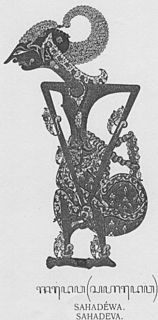
Ashoka, sometimes Ashoka the Great, was an Indian emperor of the Maurya Dynasty, who ruled almost all of the Indian subcontinent from c. 268 to 232 BCE. The grandson of the founder of the Maurya Dynasty, Chandragupta Maurya, Ashoka promoted the spread of Buddhism. Considered by many to be one of India's greatest emperors, Ashoka expanded Chandragupta's empire to reign over a realm stretching from present-day Afghanistan in the west to Bangladesh in the east. It covered the entire Indian subcontinent except for parts of present-day Tamil Nadu, Karnataka and Kerala. The empire's capital was Pataliputra, with provincial capitals at Taxila and Ujjain.
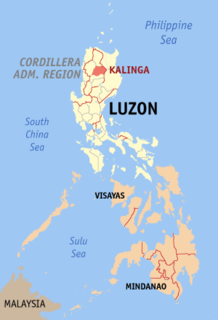
Kalinga is a landlocked province in the Philippines situated within the Cordillera Administrative Region in Luzon. Its capital is Tabuk and borders Mountain Province to the south, Abra to the west, Isabela to the east, Cagayan to the northeast, and Apayao to the north. Kalinga and Apayao are the result of the 1995 partitioning of the former province of Kalinga-Apayao; which was seen to better service the respective needs of the various indigenous peoples in the area.
Kalinga is a historical region of India. It is generally defined as the eastern coastal region between the Mahanadi and the Godavari rivers, although its boundaries have fluctuated with the territory of its rulers. The core territory of Kalinga now encompasses a large part of Odisha and northern part of Andhra Pradesh. At its widest extent, the Kalinga region also included a part of present-day Chhattisgarh.

Anga was an ancient Indian kingdom that flourished on the eastern Indian subcontinent and one of the sixteen mahajanapadas. It lay to the east of its neighbour and rival, Magadha, and was separated from it by the river Champa. The capital of Anga was located on the bank of this river and was also named Champa. It was prominent for its wealth and commerce. Anga was annexed by Magadha in the 6th century BCE.
Kharavela was a king of Kalinga in present-day Odisha, India. He ruled somewhere around first or second century BCE. His name is also transliterated as Khārabēḷa. He is the best known king of the Mahameghavahana dynasty.

The Hathigumpha Inscription, from Udayagiri, near Bhubaneswar in Odisha, was inscribed by Kharavela, the then Emperor of Kalinga in India, during 2nd century BCE. The Hathigumpha Inscription consists of seventeen lines in a Central-Western form of Prakrit incised in a deep-cut Brahmi script on the overhanging brow of a natural cavern called Hathigumpha in the southern side of the Udayagiri hill, near Bhubaneswar in Odisha. It faces straight towards the Rock Edicts of Ashoka at Dhauli, situated at a distance of about six miles.

Vanga was an ancient kingdom and geopolitical division on the Ganges delta in the Indian subcontinent. The kingdom is one of the namesakes of the Bengal region. It was located in southern Bengal, with the core region including present-day southern West Bengal (India) and southwestern Bangladesh. Vanga features prominently in the epics and tales of ancient India as well as in the history of Sri Lanka.
Utkala Kingdom was located in the northern and eastern portion of the modern-day Indian state of Odisha and also included the districts of Bankura, Purulia and Midnapore districts of West Bengal. This kingdom was mentioned in the epic Mahabharata, with the names Utkala, Utpala, and Okkal. It is mentioned in India's national anthem, Jana Gana Mana.
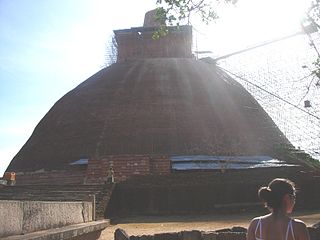
Kalinga Magha also known as Magha the Tyrant and Kulankayan Cinkai Ariyan, is an invader who is remembered primarily for his aggressive conquest. He is identified as the founder of the Jaffna kingdom and first king of the Aryacakravarti dynasty. According to the Segarāsasekara-Mālai belong the first Aryacakravarti king of Jaffna to Eastern Ganga dynasty of Kalinga, who were descendants of Western Gangas and Cholas. His family was connected to the rulers of Ramanathapuram in Tamil Nadu. Kalinga Magha’s relatives of Ramanathapuram administered the famous temple of Rameswaram. He usurped the throne from Parakrama Pandyan II of Polonnaruwa, in 1215. His reign saw the massive migration of native Sinhalese to the south and west of Sri Lanka, and into the mountainous interior, in a bid to escape his power. Magha was the last ruler to have his seat in the traditional northern seat of native power on the island, known as Rajarata; so comprehensive was his destruction of Sinhalese power in the north that all of the successor kingdoms to Rajarata existed primarily in the south of the island.
The name Odisha refers to the current state in India. In different eras the region and parts of the region were known by different names. The boundaries of the region also have varied over the ages.
Rajapura was the capital of the Kalinga king Chitrangada. Chitrangada's daughter was abducted by Duryodhana, with the help of his friend Karna, and became his wife.
Dantapuram a small village in Srikakulam district. It is a site of great religious and historical significance. Known as Buddhas Tooth at Dantapura, the capital of the Kalingas. While ancient Dantapuram sank into oblivion, Kandy receives tens of thousands of visitors every month. Historians believe it to be the capital of Kalinga Kingdom. Emperor Asoka fought Kalinga War in 261 BC.

The Eastern Ganga dynasty was a medieval Indian dynasty that reigned from Kalinga from the 11th century to the early 15th century. The territory ruled by the dynasty consisted of the whole of the modern-day Indian state of Odisha as well as parts of West Bengal, Andhra Pradesh and Chhattisgarh. The early rulers of the dynasty ruled from Dantapura; the capital was later moved to Kalinganagara, and ultimately to Kataka. Today, they are most remembered as the builders of the Konark Sun Temple, a UNESCO World Heritage site at Konark, Odisha.
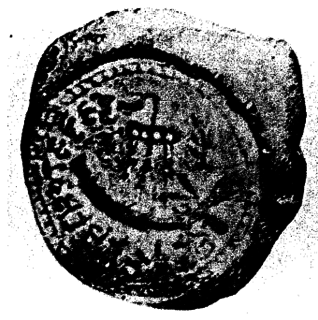
The Maritime history of Odisha, known as Kalinga in ancient times, started before 350 BC according to early sources. The people of this region of eastern India along the coast of the Bay of Bengal sailed up and down the Indian coast, and travelled to Indo China and throughout Maritime Southeast Asia, introducing elements of their culture to the people with whom they traded. The 6th century Manjusrimulakalpa mentions the Bay of Bengal as 'Kalingodra' and historically the Bay of Bengal has been called 'Kalinga Sagara', indicating the importance of Kalinga in the maritime trade. The old traditions are still celebrated in the annual Bali Jatra, or Boita-Bandana festival held for five days in October / November.
Sinhapura was the capital of the legendary Indian king Sinhabahu. It has been mentioned in the Buddhist legends about Prince Vijaya. The name is also transliterated as Sihapura or Singhapura.
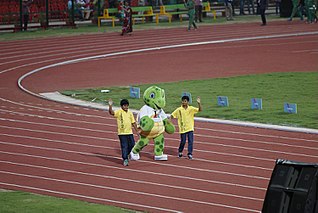
Sports is an important part of the culture of Odisha and hence it plays a key role in development of the state. Field hockey, athetics, tennis, rugby union, rugby sevens, association football and cricket the most popular sports in the Indian state of Odisha.
The Mathara dynasty ruled in the Kalinga region of eastern India during 4th and 5th centuries CE. Their territory included parts of the area between the present-day Ganjam district of Odisha and the Srikakulam district in Andhra Pradesh. They appear to have been overthrown by the Pitrbhakta dynasty.

